One of my all-time favorite Springfield Armory pistols is the 1911 DS Prodigy. This is a pistol with all the benefits of the 1911 platform, but in a double-stack 9mm configuration. The Prodigy is incredibly easy to shoot, being both accurate and reliable. The 1911 is a tough design to beat, and it seems that it just keeps getting better over time, especially in a double-stack configuration. When I first received my 5” Prodigy, I sent it off to MK3 Firearms to have custom work done to the pistol, including porting the slide and barrel and slide. Boy, did it make a difference.
Porting (or compensating) has become a very popular way to squeeze extra performance out of pistols as an aftermarket or factory option. First proven by the company with the Springfield Hellcat RDP, they brought the same integral compensation technology to the Prodigy line of pistols. You can now choose between a 4.25” and 5” versions of the Prodigy with an integral compensator.
[Be sure to read Joe Kurtenbach’s Springfield Prodigy Comp review.]
The Details
The Prodigy Comp features a single port at the top of its hammer-forged slide and barrel. The comp redirects gas upwards, thereby reducing muzzle rise and enhancing control of the pistol. You’ll notice a greater command of the pistol, with ease of keeping your sights on target after you break the shot.
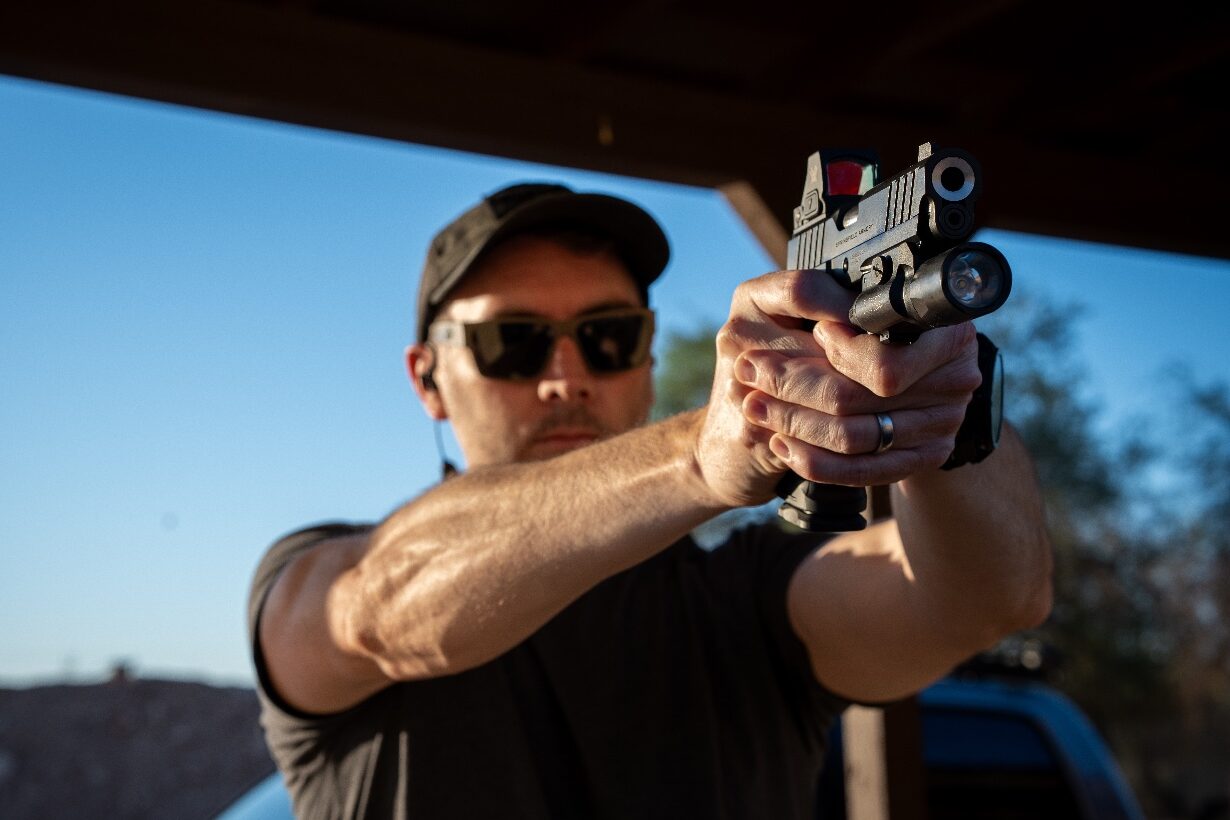
The comp’s benefits are most evident when firing quickly as the slide returns to zero faster and more efficiently. The integral compensator on the Prodigy is made possible by machining a specifically sized opening in the slide and barrel that match each other perfectly.
[Learn more about compensators here.]
Once the bullet passes the port, the gases behind the bullet are first able to escape upwards and out of the top of the pistol before they fully exit the barrel. These gases escaping the top of the pistol force the pistol down, which minimizes the muzzle climb inherent in recoil.
Source Code
The Prodigy pistol is a unique 1911 for Springfield as it’s the first DS, or “double stack” option offered. To create a double-stack 1911, the main change happens in the grip module to support the larger width of the magazine.
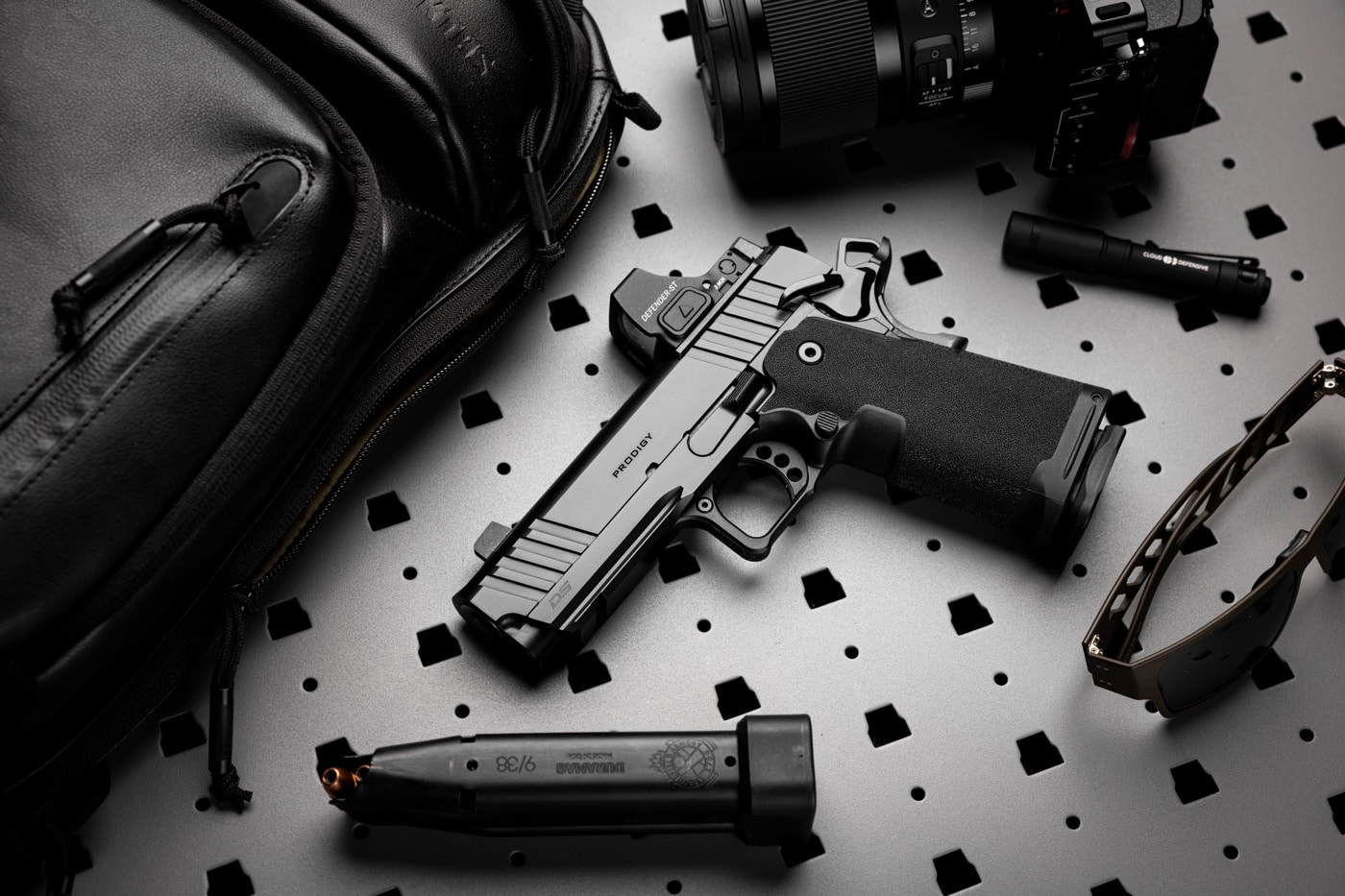
The Prodigy pistols feature a polymer grip module that is mounted to a steel frame, offering capacities of 17+1, 20+1 and even 26+1 in 9mm. The Prodigy employs the interchangeable AOS plate system to accept today’s most popular optics, which co-witness most of today’s most popular optics with the tritium front and black serrated rear iron sights. To accommodate the comp, the front sight of this new variant was moved rearward slightly to be behind the port.
Equipped with extended ambi thumb safety and an accessory rail for mounting lights and lasers, the Prodigy is set up to keep up with professional use. Aiding in accuracy and durability, the Prodigy is equipped with a match-grade bull barrel that will last a very long time.
Hands-On
I took out both models to the range, the 4.25” and the 5” version. I set them up with Vortex Defender-ST optics and Surefire X300 lights, and ran 115-gr. ball ammo in the magazines. I’ve found that with compensated pistols, the lighter, faster-traveling 115-gr. 9mm performs really well in reducing the muzzle rise via the compensated porting.
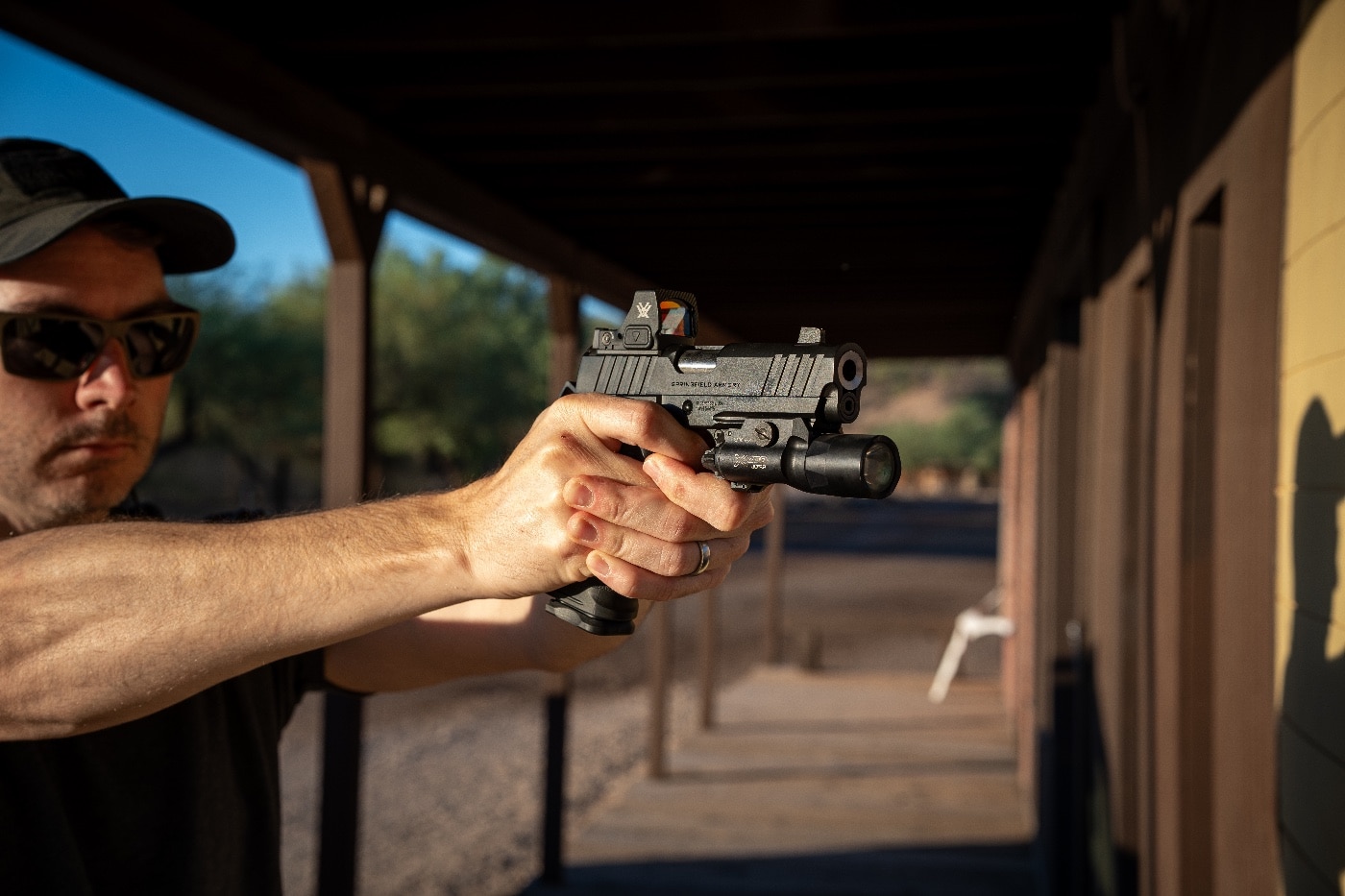
Between the two, there is certainly a noticeable difference in the handling and felt recoil. The 5” is very soft shooting, but because of the mass of the slide it feels a bit slower to return to target. On the other hand, the 4.25” with its shorter slide and being a bit lighter seems to get back on target a bit faster. But, it’s also a tad snappier. Both pistols chewed through the ammo with no issues and performed great, easily placing hammer pairs on top of each other.
The 1911 platform is so smooth and has such a distinct feel to it that it takes me a couple of magazines to get into the rhythm. I am used to shooting the Hellcat and Echelon, which have that traditional striker-fired trigger feel. Slight take up, squeeze through to the wall, break, reset.
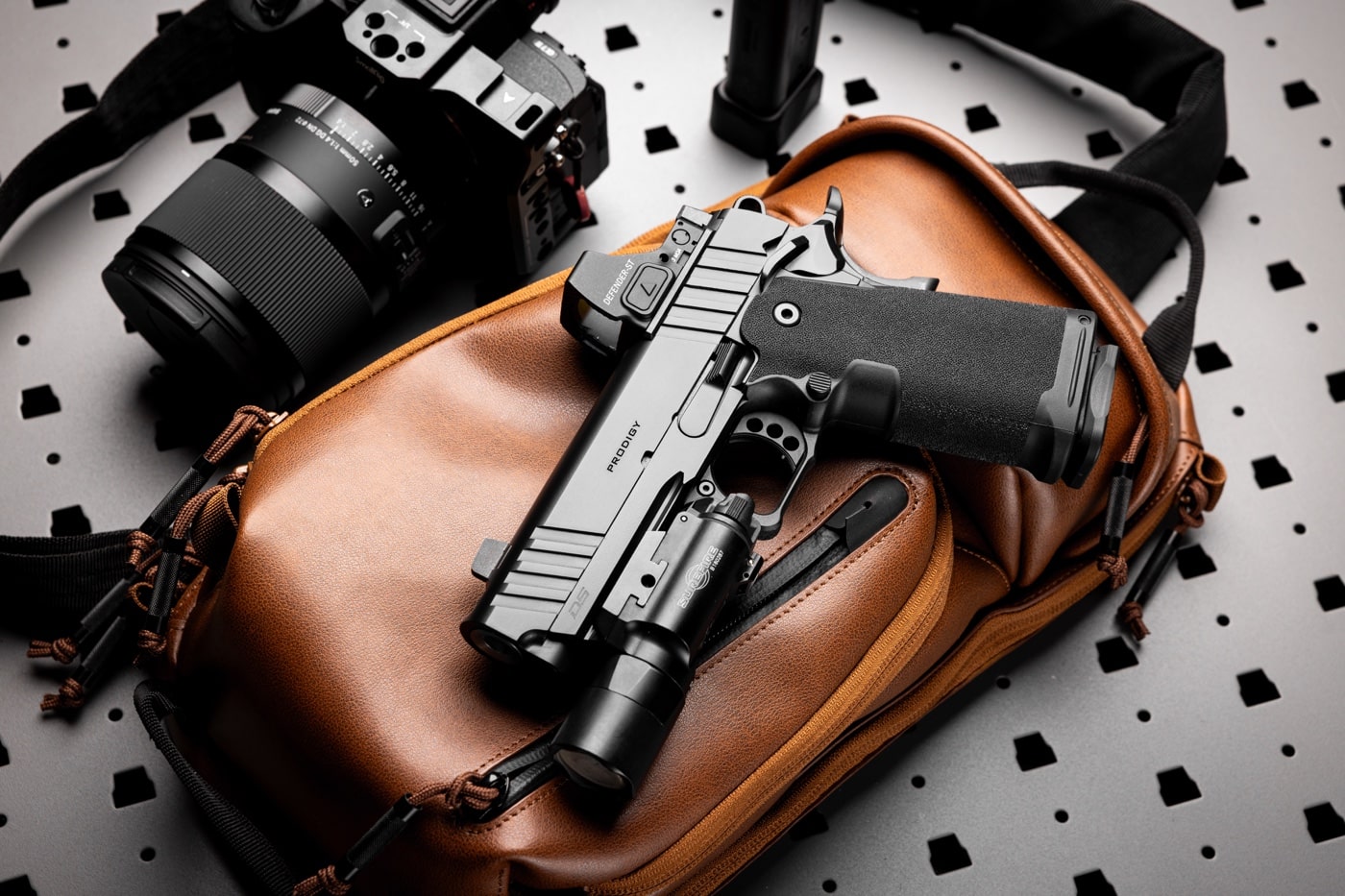
The Prodigy has very little take-up, and then the break with very little reset. The trigger is excellent. Once I got dialed back into the feel of the Prodigy, I loved the feel of the integral compensator and its benefits. In a lot of ways, the Prodigy Comp just feels like cheating.
With minimal effort, I am able to quickly place accurate rounds at distance on steel. I can certainly make those same shots with my Echelon, but it does take me a little longer to ensure my trigger press doesn’t interrupt my sight picture.
Conclusion
If I had to choose between the 4.25” and the 5” models I think I would be inclined to slightly favor the 4.25” for my personal shooting style. The smaller, lightweight nature of the pistol stands out to me. I also prefer the snappier and quicker feel of the recoil impulse of a slightly shorter slide. On the other hand, If I wanted maximum accuracy and minimal muzzle rise, I would go for the 5” version.
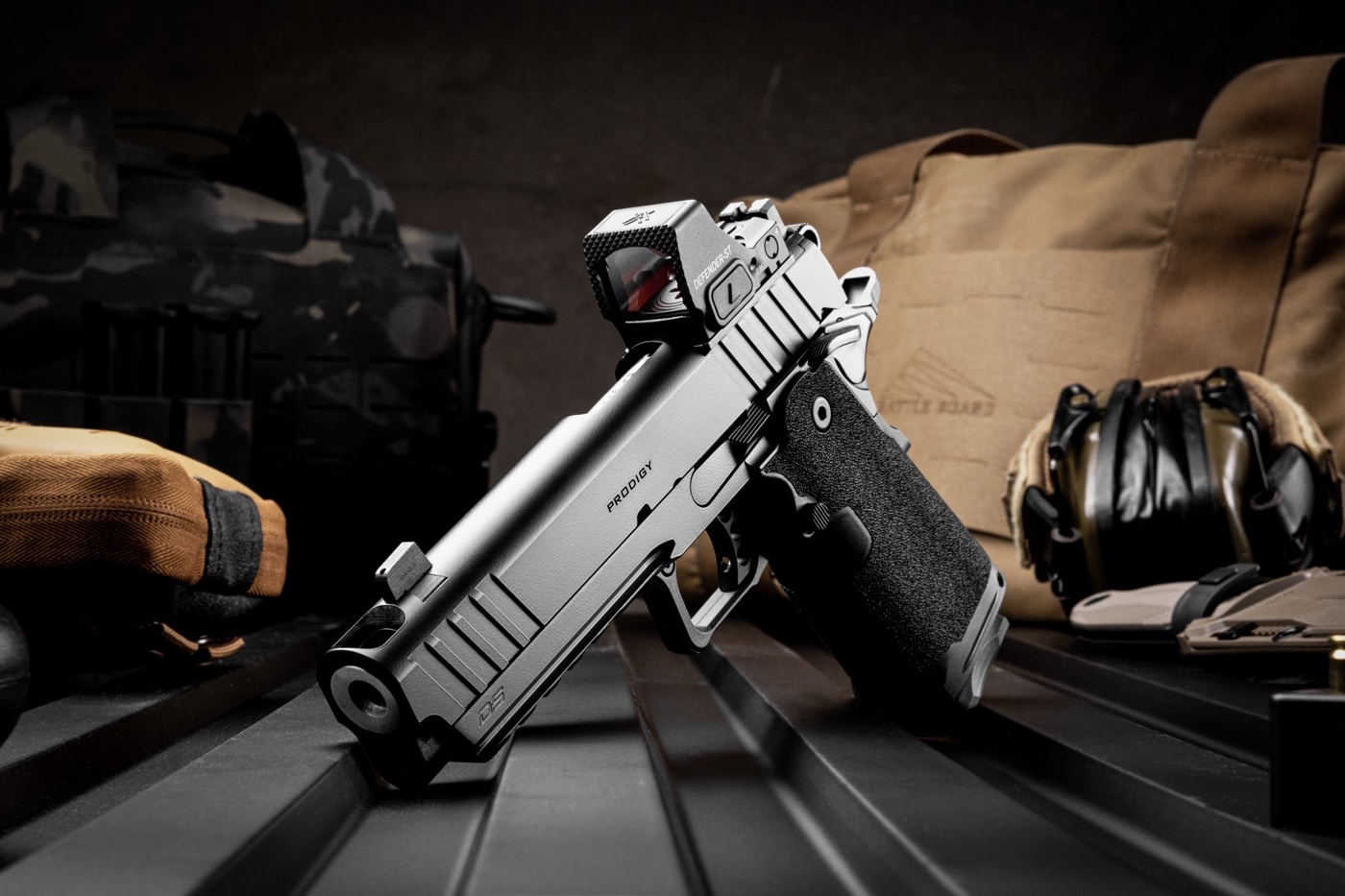
If you get a chance to check out the Prodigy Comp, I think you will be greatly impressed at the bang for your buck. Be warned though, you may demand all your pistols be compensated going forward.
Editor’s Note: Please be sure to check out The Armory Life Forum, where you can comment about our daily articles, as well as just talk guns and gear. Click the “Go To Forum Thread” link below to jump in!
Read the full article here

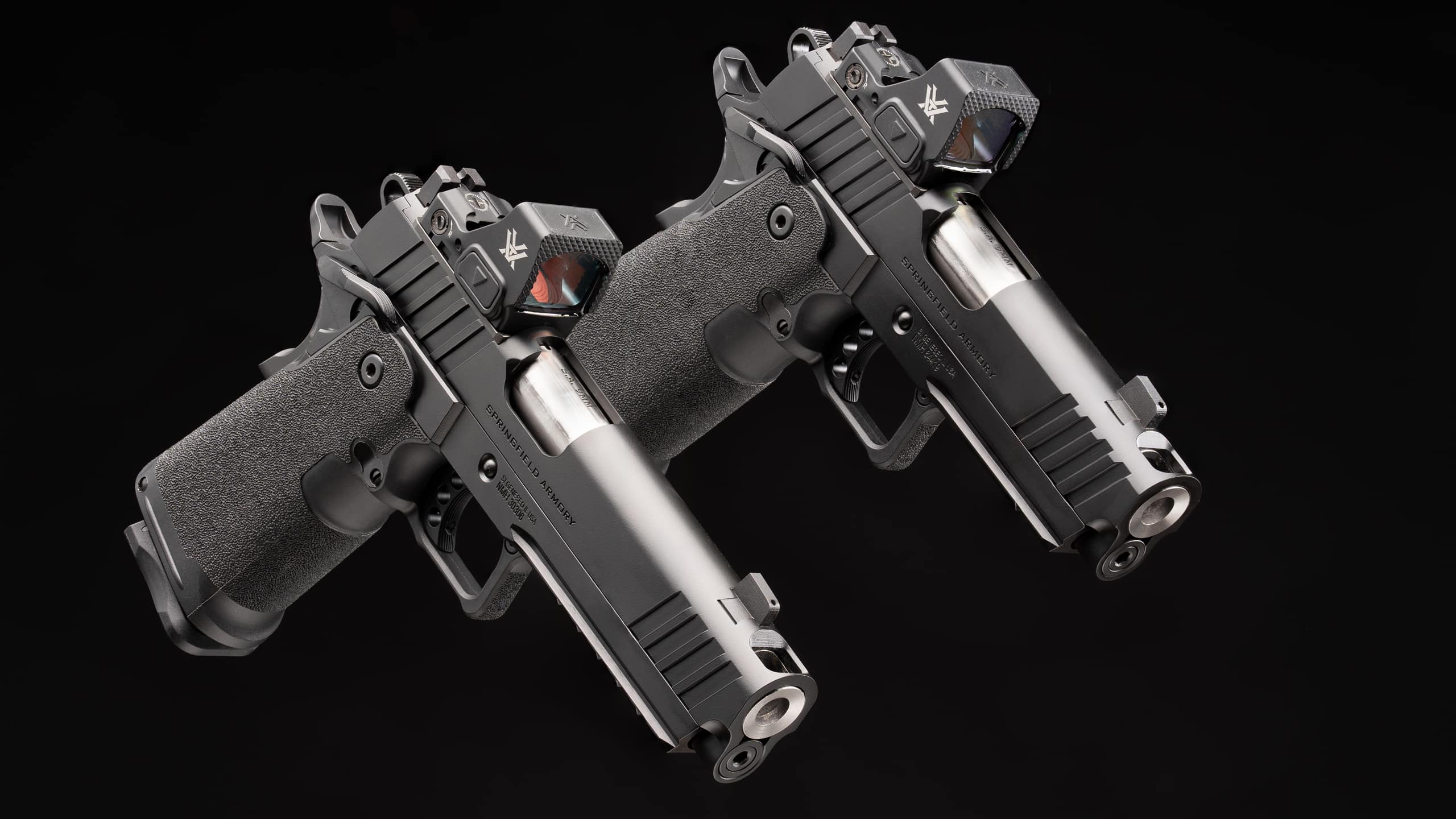
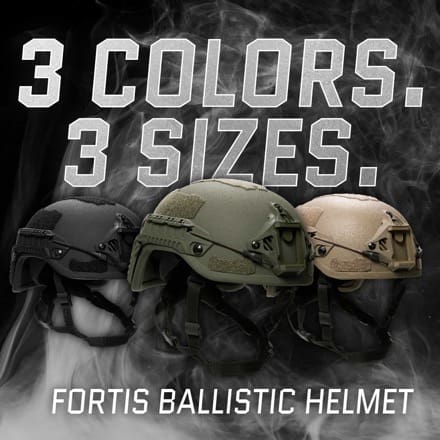


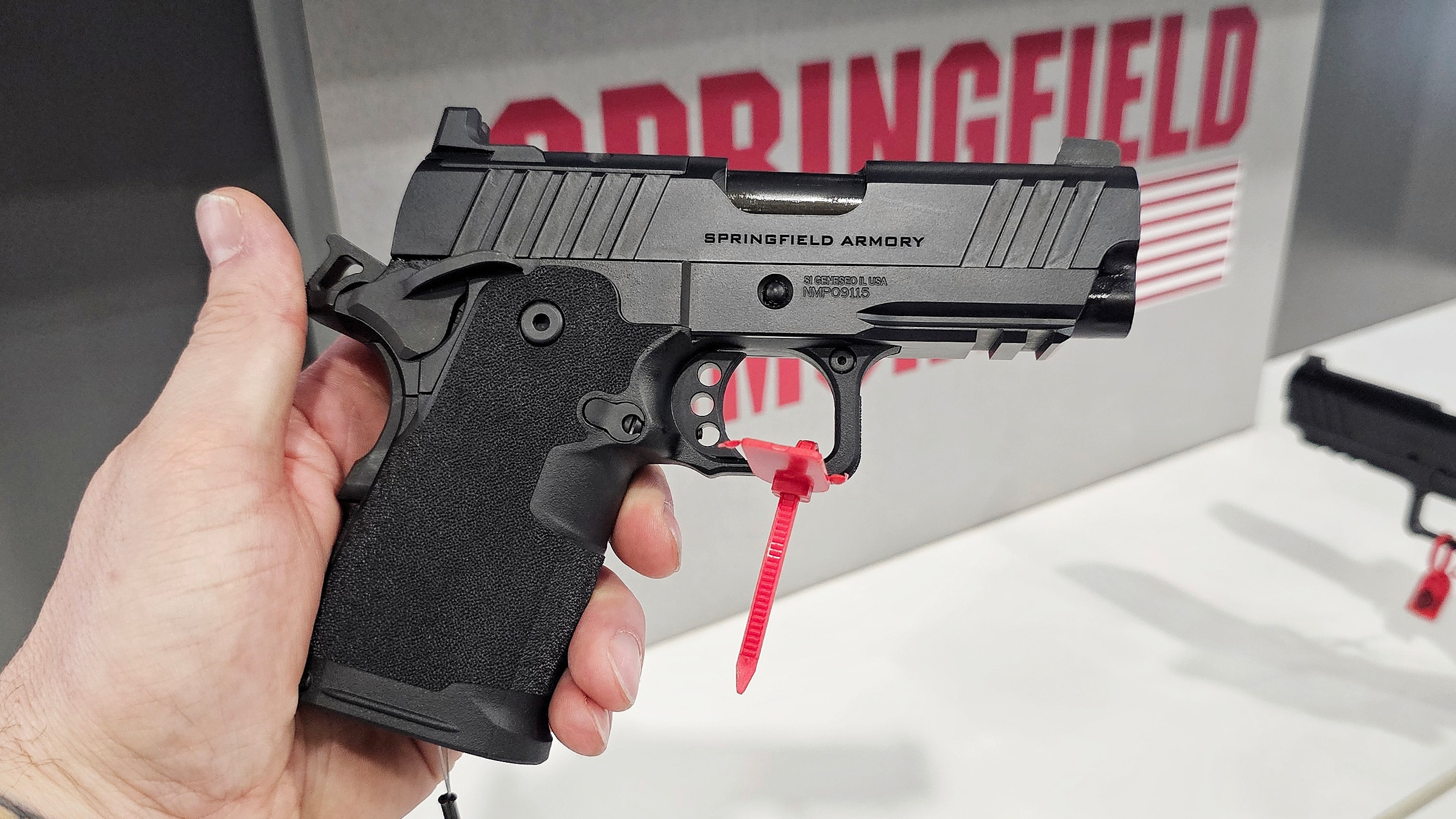

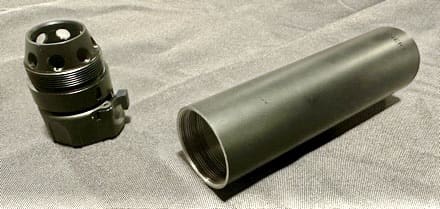
Leave a Reply